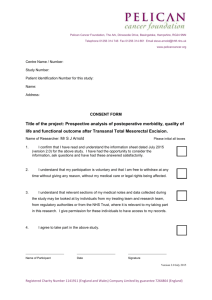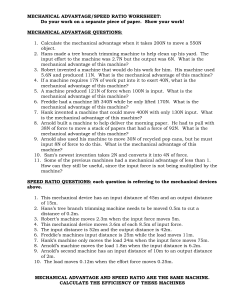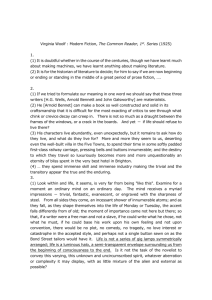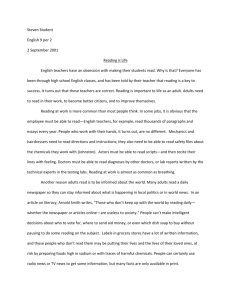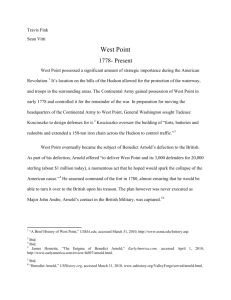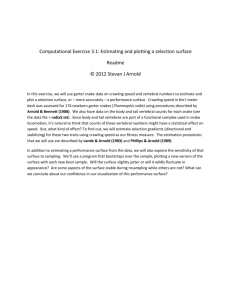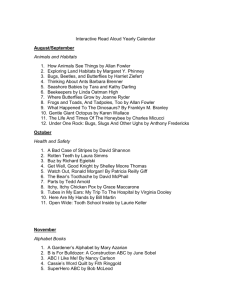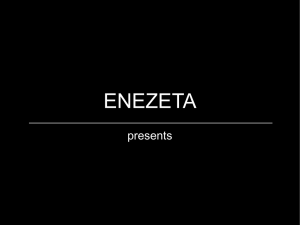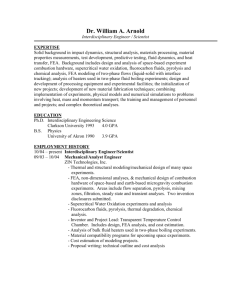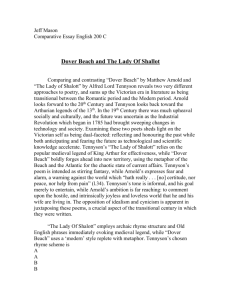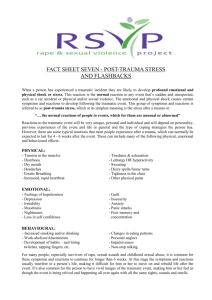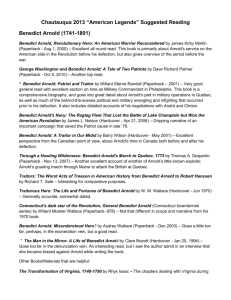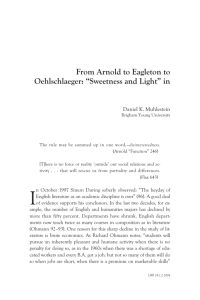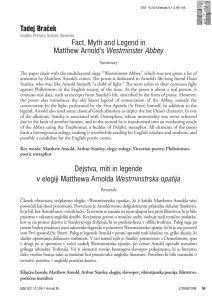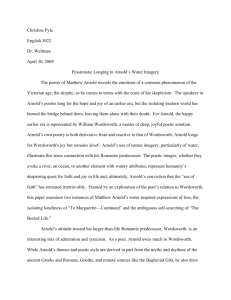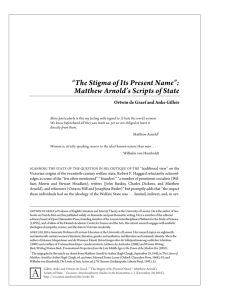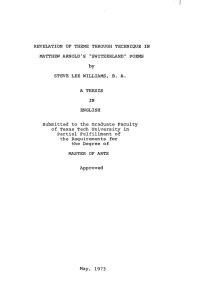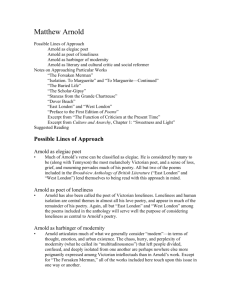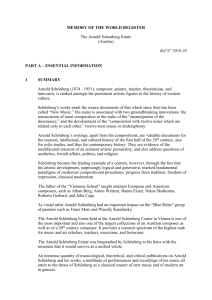LAST LAP
advertisement
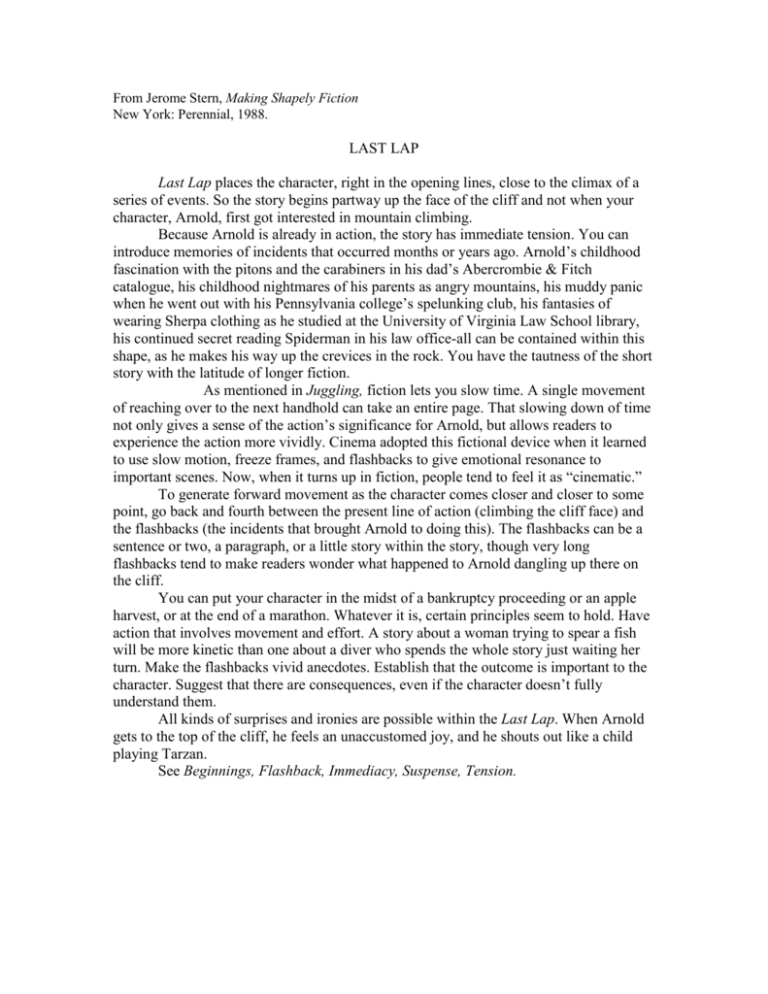
From Jerome Stern, Making Shapely Fiction New York: Perennial, 1988. LAST LAP Last Lap places the character, right in the opening lines, close to the climax of a series of events. So the story begins partway up the face of the cliff and not when your character, Arnold, first got interested in mountain climbing. Because Arnold is already in action, the story has immediate tension. You can introduce memories of incidents that occurred months or years ago. Arnold’s childhood fascination with the pitons and the carabiners in his dad’s Abercrombie & Fitch catalogue, his childhood nightmares of his parents as angry mountains, his muddy panic when he went out with his Pennsylvania college’s spelunking club, his fantasies of wearing Sherpa clothing as he studied at the University of Virginia Law School library, his continued secret reading Spiderman in his law office-all can be contained within this shape, as he makes his way up the crevices in the rock. You have the tautness of the short story with the latitude of longer fiction. As mentioned in Juggling, fiction lets you slow time. A single movement of reaching over to the next handhold can take an entire page. That slowing down of time not only gives a sense of the action’s significance for Arnold, but allows readers to experience the action more vividly. Cinema adopted this fictional device when it learned to use slow motion, freeze frames, and flashbacks to give emotional resonance to important scenes. Now, when it turns up in fiction, people tend to feel it as “cinematic.” To generate forward movement as the character comes closer and closer to some point, go back and fourth between the present line of action (climbing the cliff face) and the flashbacks (the incidents that brought Arnold to doing this). The flashbacks can be a sentence or two, a paragraph, or a little story within the story, though very long flashbacks tend to make readers wonder what happened to Arnold dangling up there on the cliff. You can put your character in the midst of a bankruptcy proceeding or an apple harvest, or at the end of a marathon. Whatever it is, certain principles seem to hold. Have action that involves movement and effort. A story about a woman trying to spear a fish will be more kinetic than one about a diver who spends the whole story just waiting her turn. Make the flashbacks vivid anecdotes. Establish that the outcome is important to the character. Suggest that there are consequences, even if the character doesn’t fully understand them. All kinds of surprises and ironies are possible within the Last Lap. When Arnold gets to the top of the cliff, he feels an unaccustomed joy, and he shouts out like a child playing Tarzan. See Beginnings, Flashback, Immediacy, Suspense, Tension.
